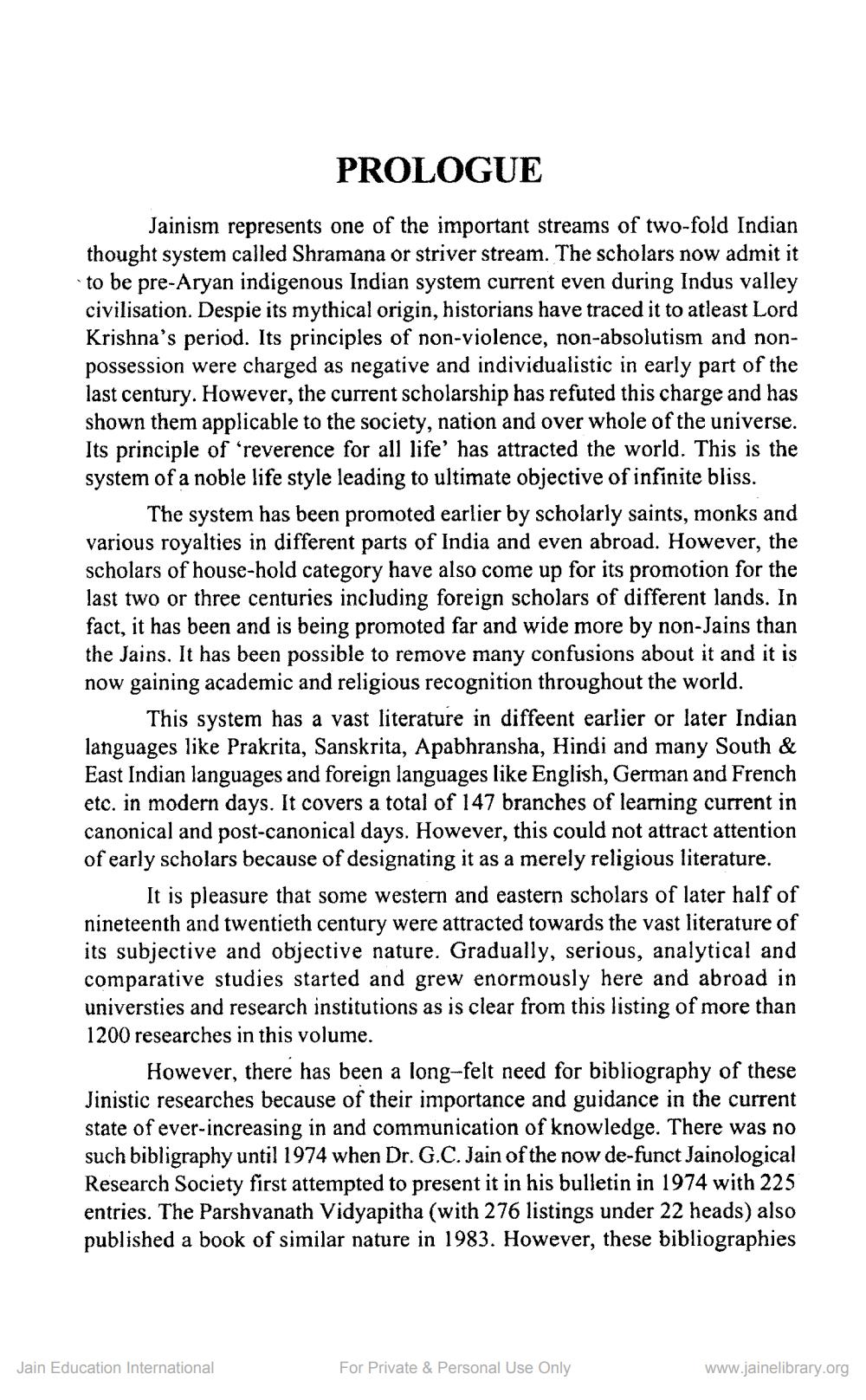________________
PROLOGUE
Jainism represents one of the important streams of two-fold Indian thought system called Shramana or striver stream. The scholars now admit it to be pre-Aryan indigenous Indian system current even during Indus valley civilisation. Despie its mythical origin, historians have traced it to atleast Lord Krishna's period. Its principles of non-violence, non-absolutism and nonpossession were charged as negative and individualistic in early part of the last century. However, the current scholarship has refuted this charge and has shown them applicable to the society, nation and over whole of the universe Its principle of 'reverence for all life' has attracted the world. This is the system of a noble life style leading to ultimate objective of infinite bliss.
The system has been promoted earlier by scholarly saints, monks and various royalties in different parts of India and even abroad. However, the scholars of house-hold category have also come up for its promotion for the last two or three centuries including foreign scholars of different lands. In fact, it has been and is being promoted far and wide more by non-Jains than the Jains. It has been possible to remove many confusions about it and it is now gaining academic and religious recognition throughout the world.
This system has a vast literature in diffeent earlier or later Indian languages like Prakrita, Sanskrita, Apabhransha, Hindi and many South & East Indian languages and foreign languages like English, German an etc. in modern days. It covers a total of 147 branches of learning current in canonical and post-canonical days. However, this could not attract attention of early scholars because of designating it as a merely religious literature.
It is pleasure that some western and eastern scholars of later half of nineteenth and twentieth century were attracted towards the vast literature of its subjective and objective nature. Gradually, serious, analytical and comparative studies started and grew enormously here and abroad in universties and research institutions as is clear from this listing of more than 1200 researches in this volume.
However, there has been a long-felt need for bibliography of these Jinistic researches because of their importance and guidance in the current state of ever-increasing in and communication of knowledge. There was no such bibligraphy until 1974 when Dr. G.C. Jain of the now de-funct Jainological Research Society first attempted to present it in his bulletin in 1974 with 225 entries. The Parshvanath Vidyapitha (with 276 listings under 22 heads) also published a book of similar nature in 1983. However, these bibliographies
Jain Education International
For Private & Personal Use Only
www.jainelibrary.org




